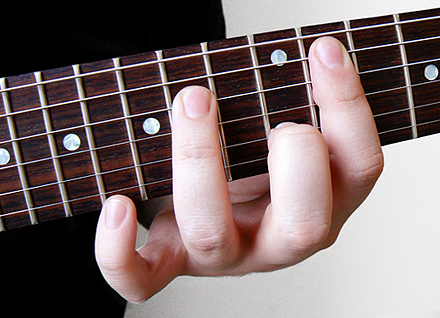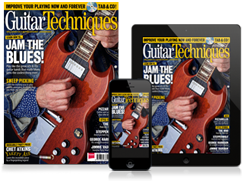How to: play fluid, flawless barre chords
Tips for tuning up your fretting hand technique

Every month, Guitar Techniques attempts to answer guitarists' playing posers and technical teasers with expert and practical advice. Here we cover an important basic: barre chords.
The question:
Dear GT
Please excuse what you must think of as being a beginner question, but I need a bit of reassurance. I'm at the stage where I'm learning to use barre chords and I can now get a good clean sound from every string 90% of the time.
The problem is speed when I'm changing from a non-barre to a barre chord. I always seem to mess it up and I want to make sure I'm approaching it the right way.
Is it correct to lay the barre first and then let the fingers fall into place? This is what I'm doing at the moment and if I'm playing a song there's always a glitch in my timekeeping when I do it.
If there's another way, or if it's just a question of putting more hours in where practice is concerned, I'd really appreciate some guidance.
Dell
Get the MusicRadar Newsletter
Want all the hottest music and gear news, reviews, deals, features and more, direct to your inbox? Sign up here.
The answer:
Barre chords represent a huge hurdle in the early days of learning guitar because of the demands they put on the fretting hand. It's often the case that this particular hand has to develop muscle and overall strength before barre chords become easier - and this is something you cannot rush.
So, to begin with, take comfort in the fact that we've all experienced the horrors of mastering barre chords and that you will get there in the end.
As to how to play a barre correctly, you'll find that most experienced players will position all the fingers at once in a single co-ordinated movement.
However, part of the learning curve involves a bit of fumbling around; when you think about it, you have to position the first finger correctly before any of the other digits come into play and so it's absolutely logical to assume that this is the way to do things.
But as you gain more experience, you'll find that the fingers pretty much all fall into place at once in much the same way as they do when you play one of the easier non-barre shapes like D major - and you quite possibly had all sorts of problems with them earlier on.
So, as you guessed, it really is a question of putting more hours of practice in. A great tip is to practise forming the chord shape with your fingers 'in the air' between chord changes, so the fingers all land at once.
It might seem like a long journey to begin with, but we're sure you'll be playing barres seamlessly and without thinking too much about it before long!







![Chris Hayes [left] wears a purple checked shirt and plays his 1957 Stratocaster in the studio; Michael J. Fox tears it up onstage as Marty McFly in the 1985 blockbuster Back To The Future.](https://cdn.mos.cms.futurecdn.net/nWZUSbFAwA6EqQdruLmXXh-840-80.jpg)






